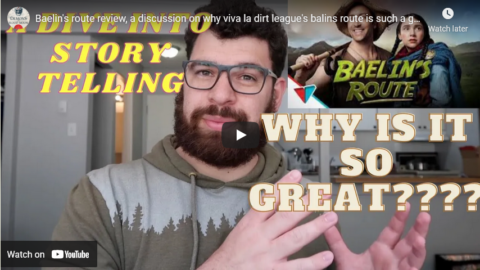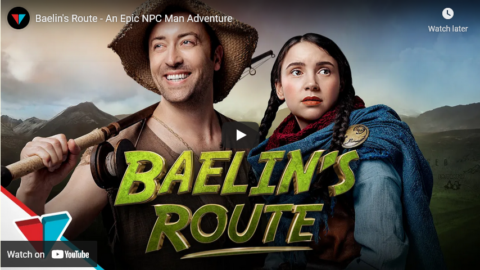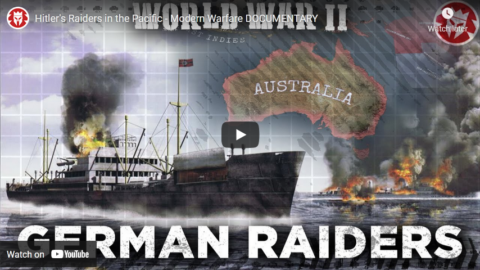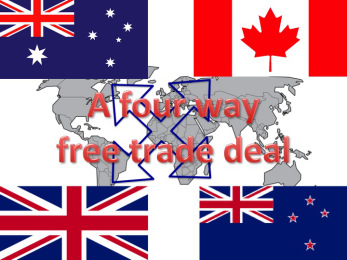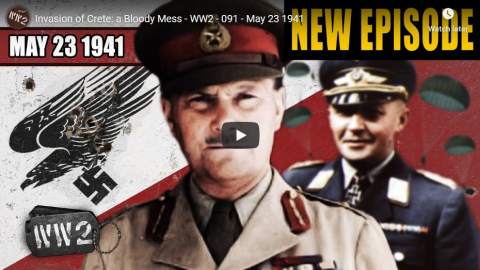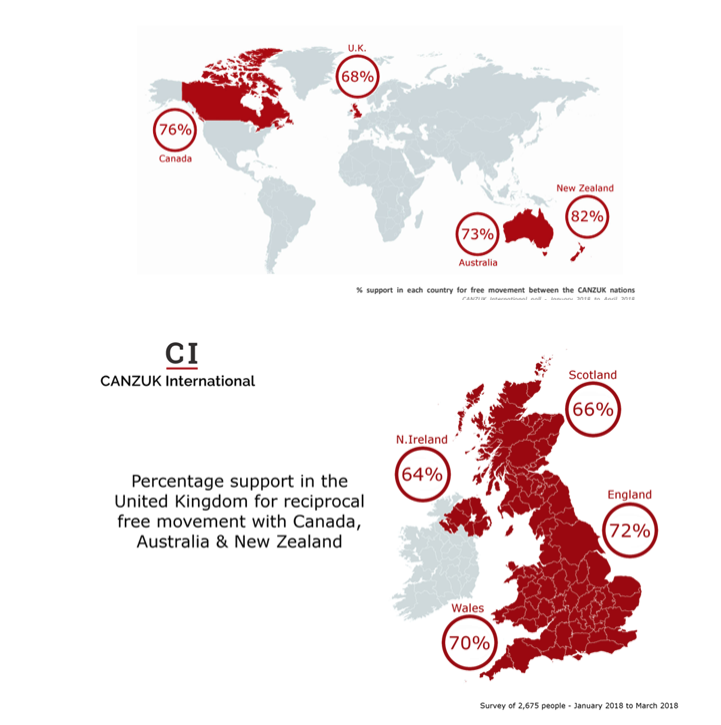World War Two
Published 29 Oct 2022Erich von Manstein finally gets the reserve armor he’s been begging Hitler for, so he can carry out his counteroffensive in Ukraine. The Soviets are still on the move themselves though. In Italy, though, the Allies are moving at a crawl since the Germans have mined and booby trapped everything. There’s also new action in the Solomons and a celebration in Japan.
(more…)
October 30, 2022
Fresh German Armor in the USSR! – WW2 – 218 – October 29, 1943
September 22, 2022
RAF Coastal Command vs U-Boats
The History Guy: History Deserves to Be Remembered
Published 5 Oct 2020The contest between aircraft and U-Boats during the Second World War was one of competing technological innovations, culminating with a decisive struggle in the summer of 1943. The History Guy tells the forgotten story of the development of anti-submarine warfare and the contest between the aircraft of RAF Coastal Command and U-Boats of the Kriegsmarine in the Bay of Biscay.
(more…)
April 10, 2022
Mussolini is Tired of War – WW2 – 189 – April 9th , 1943
World War Two
Published 9 Apr 2022Adolf Hitler meets with Benito Mussolini to hopefully restore his flagging morale and convince him that the Axis can hold out in North Africa, but the situation there grows more precarious and this week there the Allies advancing from the west and the east link up for the first time. The Axis are also holding out in the Caucasus, as new Soviet attacks to take Krymskaya begin.
(more…)
August 8, 2021
Australia’s FAL-Based L2A1 Heavy Automatic Rifle
Forgotten Weapons
Published 21 Apr 2021http://www.patreon.com/ForgottenWeapons
https://www.floatplane.com/channel/Fo…
Cool Forgotten Weapons merch! http://shop.forgottenweapons.com
Many the nations that adopted the FAL (or L1A1, in Commonwealth terminology) opted to also use a heavy-barreled variant of the same rifle as a light support weapon. In the Commonwealth, this was designated L2A1 and it was used by Canada, Australia, and New Zealand. The Australian model was build at Lithgow and supplied to the Australian and New Zealand forces, as well as being exported to a variety of other nations including Ghana, India, Singapore, Malaysia, Papua New Guinea, and others (total Lithgow production was 9,557). It has a 21″ heavy barrel and a distinct folding bipod with wooden panels that act as handguard when the bipod is folded up. Doctrinally, the L2A1 was intended to be used in semiauto most of the time, with the bipod and heavy barrel allowing greater sustained semiauto fire than a standard rifle.
A 30-round magazine was developed and issued, but abandoned before long. It was found to be insufficiently reliable, interfered with prone shooting, and contributed to overheating of the guns. Interestingly, Australia also opted to not have an automatic bolt hold open functionality in their FAL type rifles. The control can be used manually, but the rifle does not lock open when empty. This was presumably done in favor of keeping the action closed and clean at the expense of slower reloading (the same compromise was made on the G3 family of rifles).
This particular example is a registered transferrable machine gun made on a Lithgow receiver imported by Onyx in 1985 with other Lithgow-produced parts, including a 1960 bolt, 1961 carrier, and 1961 lower receiver from an L1A1 originally exported to Malaysia.
Contact:
Forgotten Weapons
6281 N. Oracle 36270
Tucson, AZ 85740
May 15, 2021
Baelin’s Route review, a discussion on why Viva La Dirt League’s Baelin’s Route is such a great story
Writers Block
Published 10 May 2021In this video we will discuss why Viva La Dirt League’s movie Baelin’s Route is such a masterpiece of story telling.
Viva La Dirt League — Baelin’s Route https://www.youtube.com/watch?v=PEe-Z…
May 10, 2021
Baelin’s Route – An Epic NPC Man Adventure
Viva La Dirt League
Published 9 May 2021Baelin (Rowan Bettjeman), a simple background NPC in the video game Skycraft has been walking the same route for as long as he can remember. However, his peaceful (and mindless) routine is violently shaken as a short-tempered Adventurer (Ben Van Lier) drags him off his path and into a dangerous quest to escort a mysterious NPC girl named Willow (Phoenix Cross) across the harsh world of Azerim.
ORIGINAL ‘BAELIN’S ROUTE’ SOUNDTRACK: https://mikenewport.hearnow.com/
SUPPORT ON PATREON – http://bit.ly/VLDLpatreon
DISCORD – http://bit.ly/VLDLdiscord
TWITTER: http://bit.ly/VLDLtwitter
INSTAGRAM: http://bit.ly/VLDLinstagram———————————- TWITCH ——————————-
———————————– MERCH——————————–
Merchandise: bit.ly/VLDLmerch
Songs: http://bit.ly/VLDLmusic
From the comments:
Young Dad Gaming
36 minutes ago
Okay, I know people keep talking about how good the choreography is … and we need to discuss that a little further. That was almost a full minute of a single take of a fight scene from guys who make comedy videos. That in itself is impressive and should be lauded as one of the best action scenes on YouTube.
February 23, 2021
Hitler’s Raiders in the Pacific
Kings and Generals
Published 21 Feb 2021Get your free trial of MagellanTV here: https://try.magellantv.com/kingsandge…. It’s an exclusive offer for our viewers: an extended, month-long trial, FREE. MagellanTV is a new kind of streaming service run by filmmakers with 3,000+ documentaries! Check out our personal recommendation and MagellanTV’s exclusive playlists: https://www.magellantv.com/explore/hi…
Kings and Generals 3d animated historical documentary series on modern warfare continues with a video on the German naval raiding vessels which attacked Australia, New Zealand and other Allied territories in the Pacific Ocean during the early portions of World War II. This episode focuses on the exploits of Orion, Komet, Pinguin, and Kormoran, explaining how the Kriegsmarine‘s vessels attacked the targets in the Pacific Ocean, especially Nauru and its phosphate facilities.
Support us on Patreon: http://www.patreon.com/KingsandGenerals or Paypal: http://paypal.me/kingsandgenerals. We are grateful to our patrons and sponsors, who made this video possible: https://docs.google.com/document/d/1o…
The video was made by Leif Sick, while the script was developed by Ivan Moran. The video was narrated by Officially Devin (https://www.youtube.com/user/Official…)
✔ Merch store ► teespring.com/stores/kingsandgenerals
✔ Podcast ► http://www.kingsandgenerals.net/podcast/
✔ Twitter ► https://twitter.com/KingsGenerals
✔ Instagram ► http://www.instagram.com/Kings_GeneralsProduction Music courtesy of Epidemic Sound: http://www.epidemicsound.com
#Documentary #WorldWar #Raiders
August 21, 2020
Geography works against CANZUK ever happening
Ted Campbell is a big fan of the CANZUK scheme (Canada-Australia-New Zealand-United Kingdom) to create an “anglosphere” power alongside the current economic big-hitters on the world stage like the United States, China and the European Union. I agree it has historical, nostalgic appeal, but as Aris Roussinos points out, geography is a big stumbling block to it ever being much more than an idea:
Since losing the empire, Britain has notoriously struggled to find a role on the world stage. Initial attempts to piggyback on the power of our successor as global hegemon, the United States, by acting as a guiding force — a Greece to America’s Rome, in Harold Macmillan’s phrase — faltered due to the total absence of interest ever shown in this arrangement by any American administration.
The subsequent attempt to remould Britain as a European power acting in concert with its continental neighbours through the European Union was an unhappy marriage, and has ended in a rancorous divorce whose final settlement is still to be determined. Adrift on the world stage, we are in need of good ideas.
Instead, we are offered CANZUK, a reheated Edwardian fantasy of a globe-spanning Anglosphere acting as a world power which excites the enthusiasm of a small coterie of neoliberal and neoconservative ideologues, if no one else.
In a recent piece for the Wall Street Journal, the historian and Churchill biographer Andrew Roberts argued that the CANZUK nations — Canada, Australia, New Zealand and the UK — ought to establish “some form of federation among them” as a “second Anglospheric superpower” combining “free trade, free movement of people, a mutual defense organization and combined military capabilities” , which would “create a new global superpower and ally of the U.S., the great anchor of the Anglosphere”.
One cannot fault Roberts for the grandeur of his vision, even if the details of how this would actually work are left to others to fill in. Instead, we are reassured, this would not be a centralising project like the hated EU; rather, “its program for a loose confederal state linking the Westminster democracies would be clearly enunciated right from the start.” Already, we see the harsh hand of reality ready to crush this initially appealing vision. On the one hand, CANZUK is a globe-spanning superpower ready to be born; on the other, it is merely a loose grouping of separate national governments, which would, like all national governments, act according to their own interests above all.
By totting up the different GDP figures of the various CANZUK nations, Roberts claims that his proposed Empire 2.0 “would have a combined GDP of more than $6 trillion, placing it behind only the U.S., China and the EU,” while “with a combined defense expenditure of over $100 billion, it would also be able to punch above its weight”.
Yet the flaws of this argument are obvious. As other critics have noted, only a minuscule proportion of the CANZUK nations’ trade is with each other, save New Zealand, an economic satellite of Australia. Australia is a great East Asian trading power, and will remain so. Canada is enmeshed in the greater North American trading sphere, as are we with Europe, whatever Brexiteers may wish. As always, the simple matter of geography trumps the affective bonds between far-flung kith and kin, whatever their emotional appeal.
May 26, 2020
QotD: Our sister Dominions on the other side of the world
I used to write from time to time about how strange it is that we Canadians don’t pay more attention to politics in Australia, our nearest sibling as a historic Dominion of the British crown. But this has changed a bit in the last few years. Editors have learned that Australia’s rough-and-tumble party politics and leadership “spills” make terrific entertainment. Canadian election reformers praying for proportional representation have given Oz more attention as a teaching example. Australia gets more column-inches, or at least koala GIFs, than it once did.
But, of course, the real joke here is on New Zealand. It’s the Dominion too easily forgotten for someone like me to remember to point out how forgotten it is.
What’s interesting about this is that, over the past 40 years or so, New Zealand has probably exercised a more significant political influence on Canada than Australia ever did. New Zealand’s 1980s neoliberal revolution, led by Finance Minister Roger Douglas, helped teach politicians everywhere (and especially in Alberta) tactics for deregulating, privatizing, lowering marginal tax rates, and generally blowing the dust off of planned economies.
Colby Cosh, “An ounce of Canadianity for a less-radical junior Dominion”, National Post, 2018-02-27.
May 24, 2020
Invasion of Crete: a Bloody Mess – WW2 – 091 – May 23 1941
World War Two
Published 23 May 2020Operation Mercury commences as fallschirmjäger airborne troops land on the Greek island of Crete. A bloody and messy battle follows as it turns out to be costly in more ways than one.
Join us on Patreon: https://www.patreon.com/TimeGhostHistory
Or join The TimeGhost Army directly at: https://timeghost.tvFollow WW2 day by day on Instagram @World_war_two_realtime https://www.instagram.com/world_war_t…
Between 2 Wars: https://www.youtube.com/playlist?list…
Source list: http://bit.ly/WW2sourcesWritten and Hosted by: Indy Neidell
Director: Astrid Deinhard
Producers: Astrid Deinhard and Spartacus Olsson
Executive Producers: Astrid Deinhard, Indy Neidell, Spartacus Olsson, Bodo Rittenauer
Creative Producer: Joram Appel
Post-Production Director: Wieke Kapteijns
Edited by: Iryna Dulka
Sound design: Marek Kamiński
Map animations: Eastory (https://www.youtube.com/c/eastory)Colorizations by:
– Julius Jääskeläinen – https://www.facebook.com/JJcolorization/
– Dememorabilia – https://www.instagram.com/dememorabilia/
– Norman Stewart – https://oldtimesincolor.blogspot.com/
– Jaris Almazani (Artistic Man), https://instagram.com/artistic.man?ig…
– Carlos Ortega Pereira, BlauColorizations, https://www.instagram.com/blaucoloriz…Sources:
– Imperial War Museum: A 28473, E 3064E, A 4154, A 4153, A 4149, A 4144, E 3066E, E 3023E, A 4156, E 6066
– Archives municipales de Brest
– Museums Victoria
– Bundesarchiv, CC-BY-SA 3.0: Bild_141-0816, Bild_183-L04232, Bild_101I-166-0527-10A, Bild 101I-166-0527-22 / Weixler, Franz Peter, Bild_183-L19019, Bild 146-1977-115-04, Bild 141-0823, Bild_101I-166-0512-39, Bild_146-1981-159-22, Bild_146-1980-090-34, E 3022EArchive by Screenocean/Reuters https://www.screenocean.com.
A TimeGhost chronological documentary produced by OnLion Entertainment GmbH.
September 17, 2019
From Bolt Action Lee to LMG: The Charlton Automatic Rifle
Forgotten Weapons
Published on 26 Jul 2019http://www.patreon.com/ForgottenWeapons
Cool Forgotten Weapons merch! http://shop.bbtv.com/collections/forg…
The Charlton automatic rifle is one of very, very few examples of a conversion from bolt action to self-loading rifle actually working reasonably well. Typically this sort of project founders in expense and unreliability. Charlton, however, was able to take his vision for providing the New Zealand Home Guard with a new weapon made form obsolete surplus and bring it fully to fruition, with 1500 guns made. They were never fired in anger, but allowed New Zealand to put all of its Bren guns into the field while retaining the Charltons as emergency weapons in case of Japanese invasion. Sadly, virtually all were destroyed in a warehouse fire after the war, leaving them extremely rare today.
Many thanks to the Royal Armouries for allowing me to film and disassemble this very scarce automatic rifle! The NFC collection there – perhaps the best military small arms collection in Western Europe – is available by appointment to researchers:
https://royalarmouries.org/research/n…
You can browse the various Armouries collections online here:
https://royalarmouries.org/collection/
For the whole detailed story on Charlton manufacture, and to download a copy of the manual, check my web site article here:
https://www.forgottenweapons.com/light-machine-guns/charlton-automatic-rifle/
Contact:
Forgotten Weapons
PO Box 87647
Tucson, AZ 85754
July 26, 2019
Post-Brexit, consider CANZUK
Tom Colsey explains why in a post-Brexit world, CANZUK might be an attractive economic alternative:
One possible option would mean the island nation would initially turn away from Europe toward certain anglophone Commonwealth nations and former colonies. I talk, of course, of the promising CANZUK proposal that would see Canada, Australia, New Zealand, and the United Kingdom band together with voluntary agreements on multilateral free trade and movement, forming a bloc that would singularly hold the third largest nominal GDP in the world.
The Free Movement Proposal
What makes CANZUK unique is how viable and well-thought-out it is on every level. Unlike within the EU, the grouping would not be consolidated through impositional treaties laced with unpleasant footnotes delegating political power to a bureaucratic institution. Freedom of movement would assist meeting labor market demands across the countries, yet this would be prohibited to those with serious criminal records.
Everything the EU seemed to get wrong about forming unions under a liberal-internationalist pretense, CANZUK proposals seem to get right. They account for social attitudes and the dangers of becoming impositional, eroding national sovereignty. Free movement within the European Union had been widely reviled by the domestic population — and is part of the reason Britain now is set to leave. Yet the very same population overwhelmingly favor the same principle, alternatively implemented, across the CANZUK nations, polling outright majorities in favor in every region.
Perhaps a reason for this is that while the nations are extremely close culturally, they are also resoundingly similar socio-economically. Despite their distances, the states could have been separated at birth (of course, they do share the same monarch).
June 29, 2019
Determining who the “original” inhabitants were
It’s become quite common in some countries to pay formal lip service to the “original” peoples who inhabited the land before being dispossessed of that territory by various Europeans. Actually determining who were the first human inhabitants, however, is much more fraught … you can’t exactly expiate some residual guilt of your culture by acknowledging the previous culture if the previous culture in their turn dispossessed an even earlier group, can you? How far down the rabbit hole do you need to go? Tim Worstall explains:
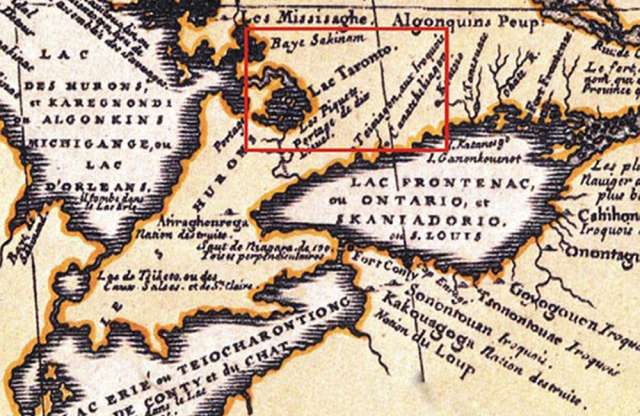
Detail from a 1688 map of western New France by Vincenzo Coronelli that locates “Lac Taronto” at Lake Simcoe.
City of Toronto Culture Division/Library and Archives Canada via the National Post
… within all that the accurate answer to “Whose land are we on?” is the land of the latest bunch of murderous bastards who killed all the previous inhabitants. Perhaps moderated to say the peeps who killed all the previous men then dated the remaining womenfolk. Because once we’ve got past that nullius stage that’s the way it has been. The Moriori are in short supply these days on the Chatham Islands given that the Maori decided to eat them.
The original inhabitants of the British Isles, the Beaker Folk, were entirely replaced by the next lot, the Iron Age Celts and similar. The Angles displaced to the west the Romano Celts in their turn, detailed DNA studies showing rather more of the female side of the R-C’s bred into the new population than the male. The Franks weren’t indigenous to France, the Allemani to Germany, the Turks to Turkey.
In fact, we’ve between little and no proof that the varied Amerinds were the original inhabitants of the lands where the White Europeans found then from 1492 onwards. In the case of both the Incas and Aztecs as political powers, proof they weren’t. And horses and Plains Indians simply weren’t a thing until the Eurasian horse was introduced post 1492.
Basically, this is indeed true. Anywhere is the possession of simply the last group of people to have slaughtered, or outbred, the previous group.
An interesting observation – if we apply the oft stated Americas example elsewhere, that Whitey stole it all and should give it back, then the Bantu should be back in Nigeria and Central Africa returned to the Pygmies, Southern to the Khoi San. We don’t say that and for the life of me I can’t work out why.
February 24, 2019
The Hobbit: The Desolation of Warners (Part 3/2)
Lindsay Ellis
Published on 20 Apr 2018Nothing is pure.
From the comments:
Special Agent Washing Tub
2 months agoMe; * watching this and feeling my childhood shatter*
“Why does it hurt so much?”
Lindsay: “BECAUSE IT WAS REAL.”
June 5, 2018
The Landings At ANZAC Cove And Suvla Bay 1915 I THE GREAT WAR On The Road
The Great War
Published on 4 Jun 2018With thanks to Mr. Ali Serim for making this episode possible.
Indy and our guide Can Balcioglu explore the northern landings sites of Gallipoli where the Australian and New Zealand Army Corps (ANZAC) landed in 1915.


